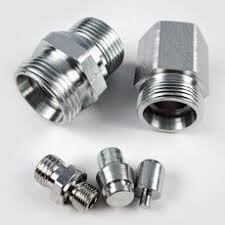Can High Strength Fasteners be Plated
We are often asked about the electro plating of high strength fasteners.
What is electro plating?
Electro plating is the process by which an object (usually made of metal) is coated with another metal, i.e. nickel, zinc, chrome, copper, gold or silver. The reason for this is usually decorative or to add resistance to corrosion.
| PLATED HIGH STRENGTH FASTENERS |
 |
The item being plated (called the substrate) is dropped into a tank in an electrolytic solution containing salts that facilitate the flow of electricity. A bar of the plating metal is then dropped into the solution. As an electric current is introduced, the metal dissolves and forms a durable coat on the substrate. One by-product of the process is that the substrate becomes fragile.
Plating high strength fasteners
The electro plating of fasteners of Grade 10.9 (high tensile strength steel) and above creates a risk of hydrogen embrittlement, also called hydrogen induced cracking. During the plating process the substrate absorbs excess hydrogen which has the effect of making the metal more brittle and less ductile.
This risk can be reduced by baking the object immediately after plating. The baking should continue for up to 24 hours at a temperature between 200 and 230 degrees C.
It must be noted however that the risk of embrittlement cannot be completely removed.

